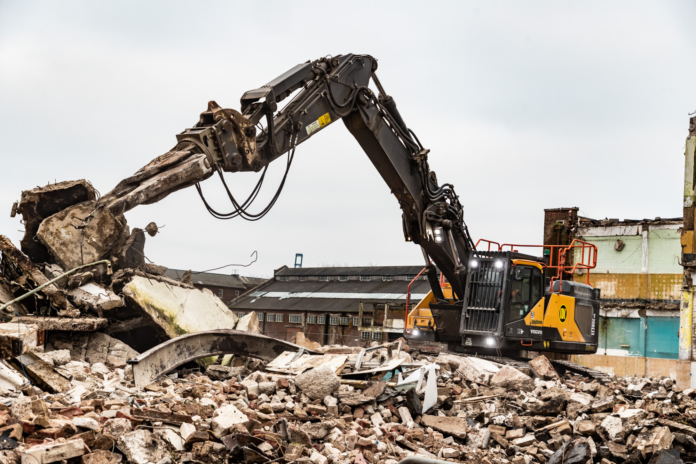Bridge demolition is a complex and highly specialized process that requires careful planning, engineering, and execution. As infrastructure ages or undergoes changes in transportation needs, the demolition of bridges becomes essential to ensure safety and pave the way for new constructions. This guide provides an in-depth look at the bridge demolition process, highlighting its significance, methodologies, safety measures, and environmental considerations.
The Importance of Bridge Demolition
Bridges serve critical roles in transportation networks, facilitating the movement of vehicles and pedestrians across obstacles such as rivers, valleys, and roads. However, over time, bridges may become structurally deficient due to wear and tear, natural disasters, or changes in traffic patterns. In such cases, bridge demolition becomes necessary to:
- Ensure Public Safety:Unsafe bridges pose significant risks to users. Demolition eliminates potential hazards associated with structural failures.
- Facilitate Upgrades:Demolishing an outdated bridge allows for the construction of modern structures that can better accommodate current and future transportation needs.
- Enhance Urban Development:Bridge demolition can free up valuable land and resources for urban redevelopment projects, improving overall infrastructure.
Planning the Demolition Process
A successful bridge demolition project begins with meticulous planning. This phase typically involves several key steps:
1. Site Assessment and Analysis
Before any demolition work begins, a comprehensive site assessment is conducted. Engineers and demolition experts evaluate the bridge’s structural integrity, materials used in construction, and surrounding environment. This analysis helps determine the most suitable demolition method and identifies any potential challenges, such as nearby structures or environmental concerns.
2. Regulatory Approvals and Permits
Bridge demolition often requires various permits and approvals from local and state authorities. Compliance with environmental regulations, safety standards, and community guidelines is essential. This step ensures that the demolition aligns with legal and environmental expectations, minimizing potential disruptions to the community.
3. Developing a Demolition Plan
A detailed demolition plan outlines the methods to be used, timelines, safety protocols, and the disposal of materials. This plan must be tailored to the specific bridge and its surroundings. Factors such as traffic management, noise control, and dust mitigation are crucial components of the plan.
Demolition Methodologies
The choice of demolition method depends on several factors, including the bridge’s design, location, and surrounding environment. Common methodologies include:
1. Mechanical Demolition
This method involves using heavy machinery such as excavators, wrecking balls, and cranes to dismantle the bridge. Mechanical demolition is often used for straightforward structures and allows for precise control during the demolition process. However, it can generate significant noise and debris, requiring careful planning to manage.
2. Controlled Demolition
Controlled demolition, also known as implosion, uses explosives to bring down a bridge in a safe and controlled manner. This method is typically reserved for larger and more complex structures where mechanical demolition may pose risks. Controlled demolition requires extensive planning and expertise to ensure that the collapse occurs in a predetermined manner, minimizing risks to surrounding areas.
3. Deconstruction
Deconstruction is a more environmentally friendly approach that focuses on carefully dismantling the bridge rather than demolishing it. This method allows for the recovery and reuse of materials, reducing waste and environmental impact. Deconstruction is often favored in urban areas where preserving surrounding structures and minimizing disruption is a priority.
Safety Measures and Precautions
Safety is paramount in any bridge demolition project. To protect workers and the public, several precautions are implemented, including:
- Site Security:Establishing barriers and restricted access zones to keep unauthorized personnel away from the demolition site.
- Personal Protective Equipment (PPE):Ensuring that all workers wear appropriate PPE, such as helmets, gloves, and safety goggles.
- Emergency Response Plans:Developing comprehensive plans to address potential accidents or emergencies, including first aid procedures and evacuation routes.
Environmental Considerations
Bridge demolition can have significant environmental impacts, making it crucial to incorporate eco-friendly practices into the process. Key considerations include:
- Asbestos and Hazardous Materials:Many older bridges may contain hazardous materials such as asbestos or lead paint. Proper identification and removal of these materials are essential to protect workers and the environment.
- Debris Management:Effective management of debris and waste is critical. Recycling and reusing materials can significantly reduce the environmental footprint of the demolition project.
- Noise and Dust Control:Implementing measures to minimize noise and dust during demolition helps mitigate disruptions to the surrounding community.
Conclusion
Bridge demolition is a multifaceted process that requires careful planning, execution, and adherence to safety and environmental standards. By understanding the importance of bridge demolition, its methodologies, and the measures necessary to ensure safety and minimize environmental impact, stakeholders can contribute to effective infrastructure management. As communities evolve and infrastructure needs change, bridge demolition will continue to play a vital role in shaping the future of transportation networks.
